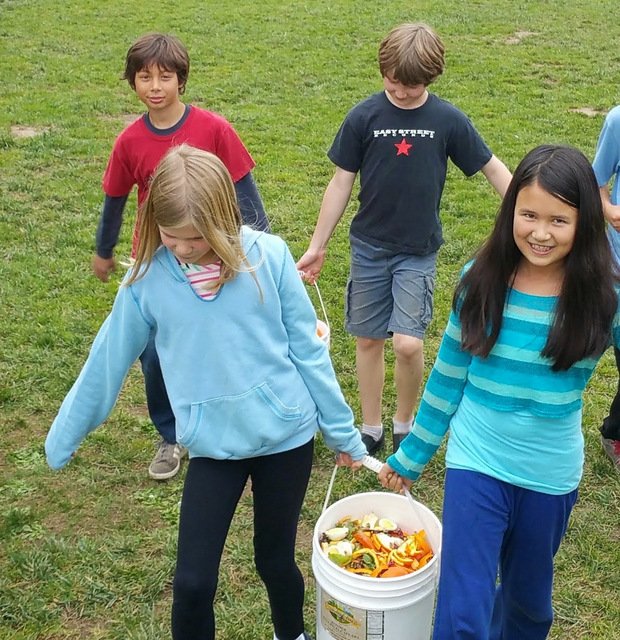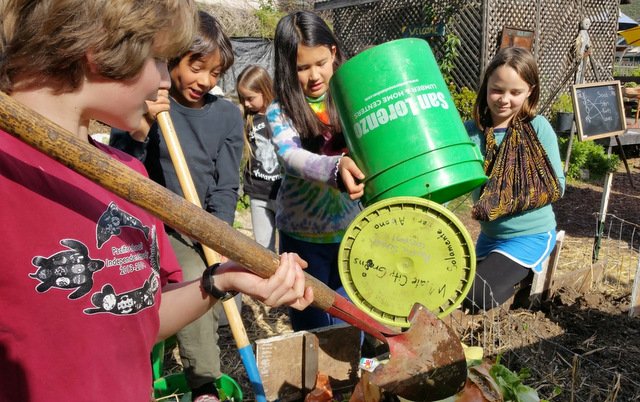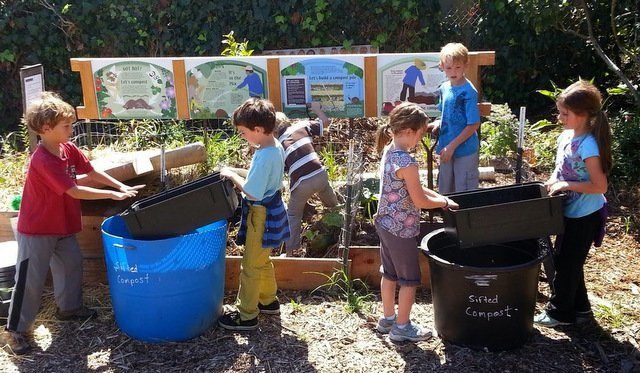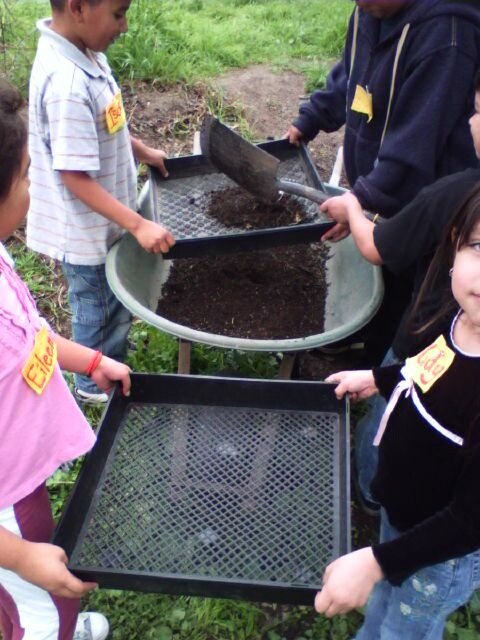Independent Stations - Caretaking and Monitoring the Garden
A garden classroom is wonderful space for children to "take ownership" of a corner of their school. Here are examples and resources for independent stations that contribute to garden caretaking and/or engage students in the scientific practice of observation. Many of these stations become part of our "garden chore" routine that we do for the first 10 minutes of garden class at Pacific Elementary School Garden.
View the presentation Stations and Rotations for Garden Care and Classroom Management
View the presentation resource handout
For more activities check out our blog posts labeled Lessons and Activities
Weather Observation and Recording
The following video and charts are how I have students observe and track the weather. I have found that 2nd grade and up can do this independently after practicing it a few times. Using a minimum/maximum thermometer allows us to track the high, low and current temperature data which could be graphed to show school year trends. Graphing, interpreting and reporting on garden data is a good rainy day activity.
Compost Building and Monitoring
Our FoodLab cooking kitchen produces and saves kitchen scraps to be composted and fed to our worms. In addition to lunchroom kitchen scraps a local restaurant saves salad prep scraps in 5 gallon buckets for us to build compost. Each week 4-8 5 gallon buckets of greens are added to our composting systems. We purchase a wheat straw bale that sits next to the compost bin as "browns". 3rd grade and older students follow this procedure to compost and record data with the help of a compost thermometer. This data is saved and graphed on rainy days. Learn much more about school-based composting.
Spread new (green) material evenly on top of pile. Chop with spade.
Cover food wastes with a thin layer of finished compost.
Cover all new (green) materials with a layer of straw (brown).
Rinse and scrub food waste buckets clean. (we use a toilet bowl brush to help clean the buckets)
Water your new layer with the bucket rinse water or spray your new layer with hose.
Using the compost thermometer record pile temperature data.
Compost sifting with small plastic trays. We have used nursery trays, sections from stacking worm bins, and bulb crates as sifters. Composting sifting is a good "early finisher" project or an independent station.
Flower Bouquets and Deadheading
Each week a class is responsible for cutting bouquets that are placed on our lunch room tables. We use empty Martinelli round apple juice bottles as vases. They are short and wide which is good for the lunch room tables. Larger vases are also filled each week for our lunchroom staff desk and front office. A milk create is used as a flower tote. We have four rules for making a good bouquet. We review the following rules every week. All grades are able to cut and arrange flowers.
Select young, not old or fading flowers. Point out examples of fresh vs fading flowers.
Cut the longest stem possible, you can always shorten it once you put it in the vase.
Remove leaves from the stems so they don't rot in the vase.
Care for your hand pruners or child sized scissors. If using pruners, practice opening and closing them. Keep them closed while walking. Return pruners/scissors to the bin when finished and make sure pruners are latched closed. We have found these smaller hand pruners to work well with kids, the hold up well, are not too costly and the latching mechanism is obvious for kids to learn.
When we are deadheading flowers with dried seeds we often have bags labeled with flower varieties to save the dried seeds. Learn more about seed saving and making seed envelopes. Learn more about reseeding annuals and see a list of reseeding annual flowers.
Worm Care
Younger grades are often very attached to worms and caring for them. Having a specific grade level task associated with being the "worm wranglers" (caretakers) works well. Having worm bin bingo or identification cards with magnifiers is a nice addition to an independent worm station. Learn more about caring for worms and teaching about vermi-composting.
Habitat Boards
Habitat boards are nothing more than a 2 foot x 3 foot (or similar size) piece of plywood placed on the ground. The board is labeled “habitat board” on the upward facing side and is placed in an area with minimum disturbance. Students visit the board every time they are in the garden and record and observe changes under the board. Often we find different types of bugs under the board. This is a good early finisher task or could be used as an observation station rotation.
Spring Fruit Tree Observations
In the winter and spring we observe dormant tree buds beginning to swell, leaf and/or flower. Teams of students visit the same tree over the spring and make observations for 5 minutes before garden lessons. Additionally we can use these tree observation teams for grade level tasks such as mulching, fertilizing, and fruit thinning. We usually mark a 8-12 inch section of branch with two pieces of masking tape with a few buds in between the taped sections. We use an observation sheet like this one as the buds develop. Spring Apple Tree Observation
Pollinator Observations
As part of a Citizen Science project students can make daily observations a part of the garden classroom routine. Use your garden or school yard to collect data and share with others collecting similar data for a greater cause.
In our garden our students participate in The Great Sunflower Project by conducting 5 minute pollinator observations.
We use this Pollinator Count Log to record our data.
Find more Citizen Science ideas at the following sites:
scistarter.com/educators
pbskids.org/scigirls/citizen-science
www.commonsense.org/education/top-picks/best-citizen-science-apps-and-sites-for-students











